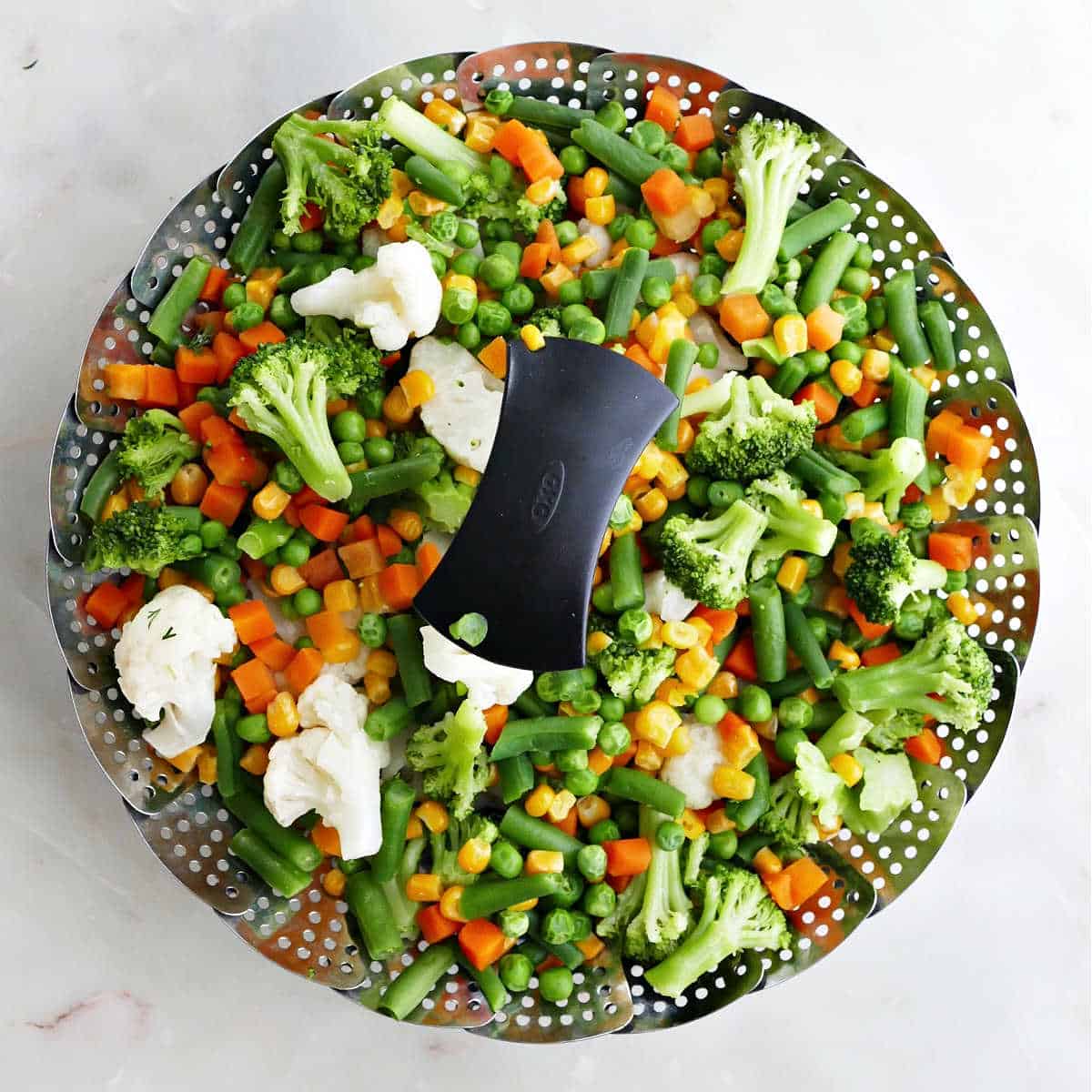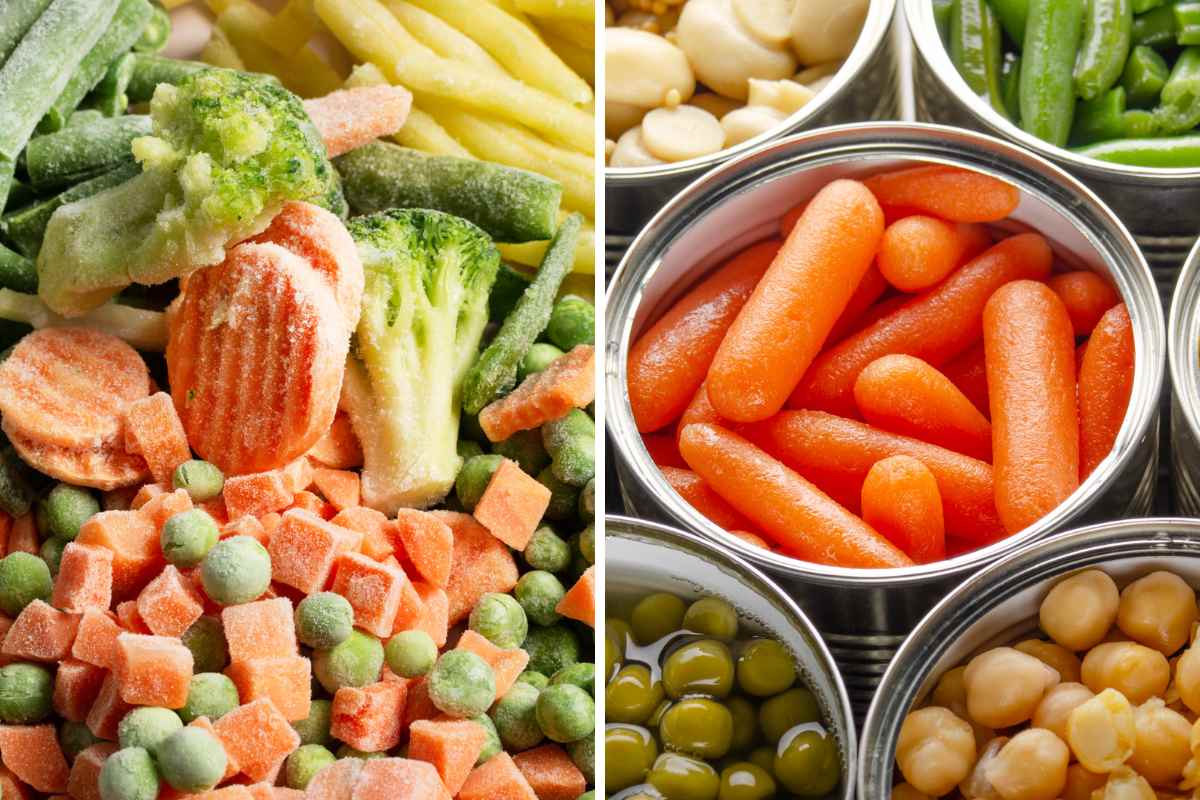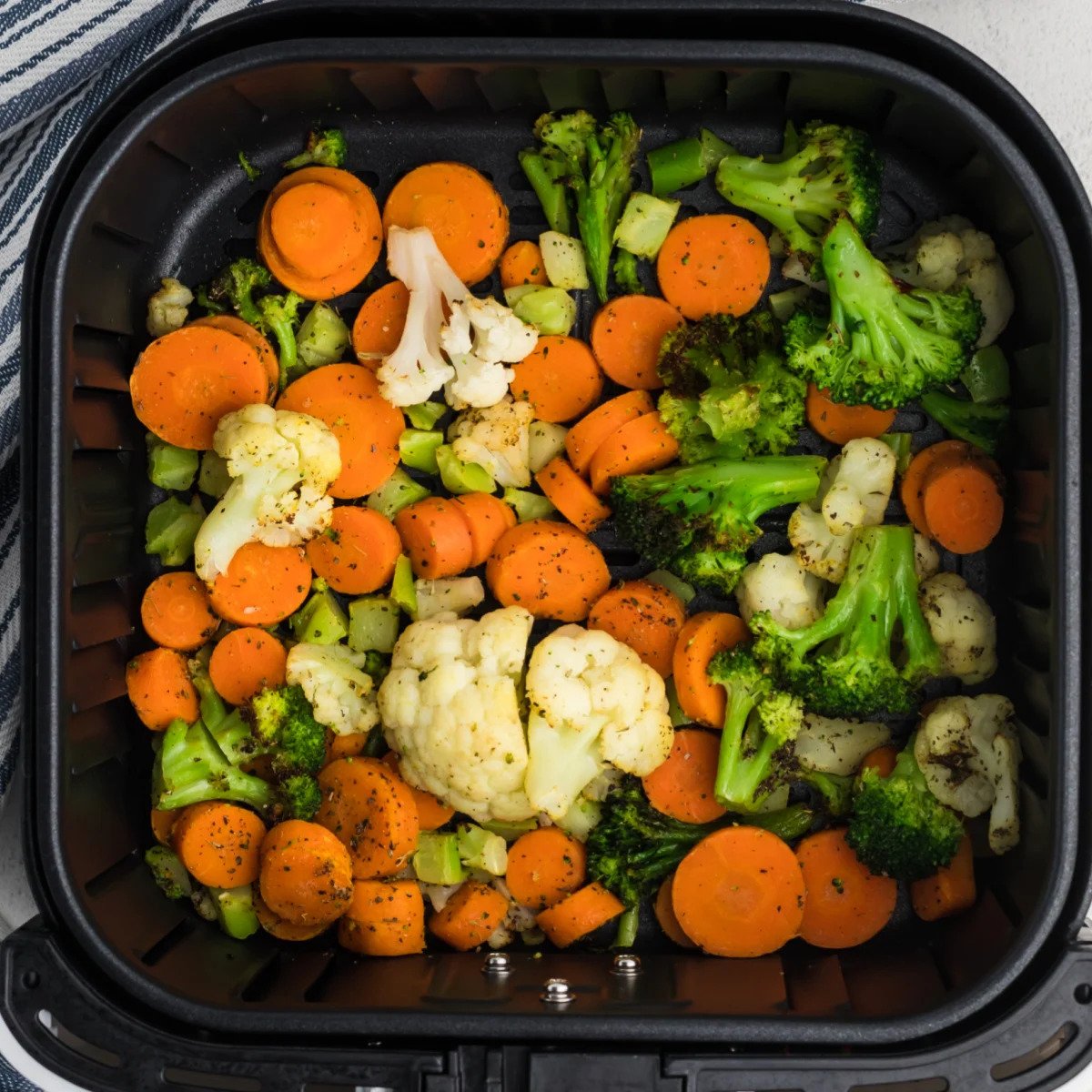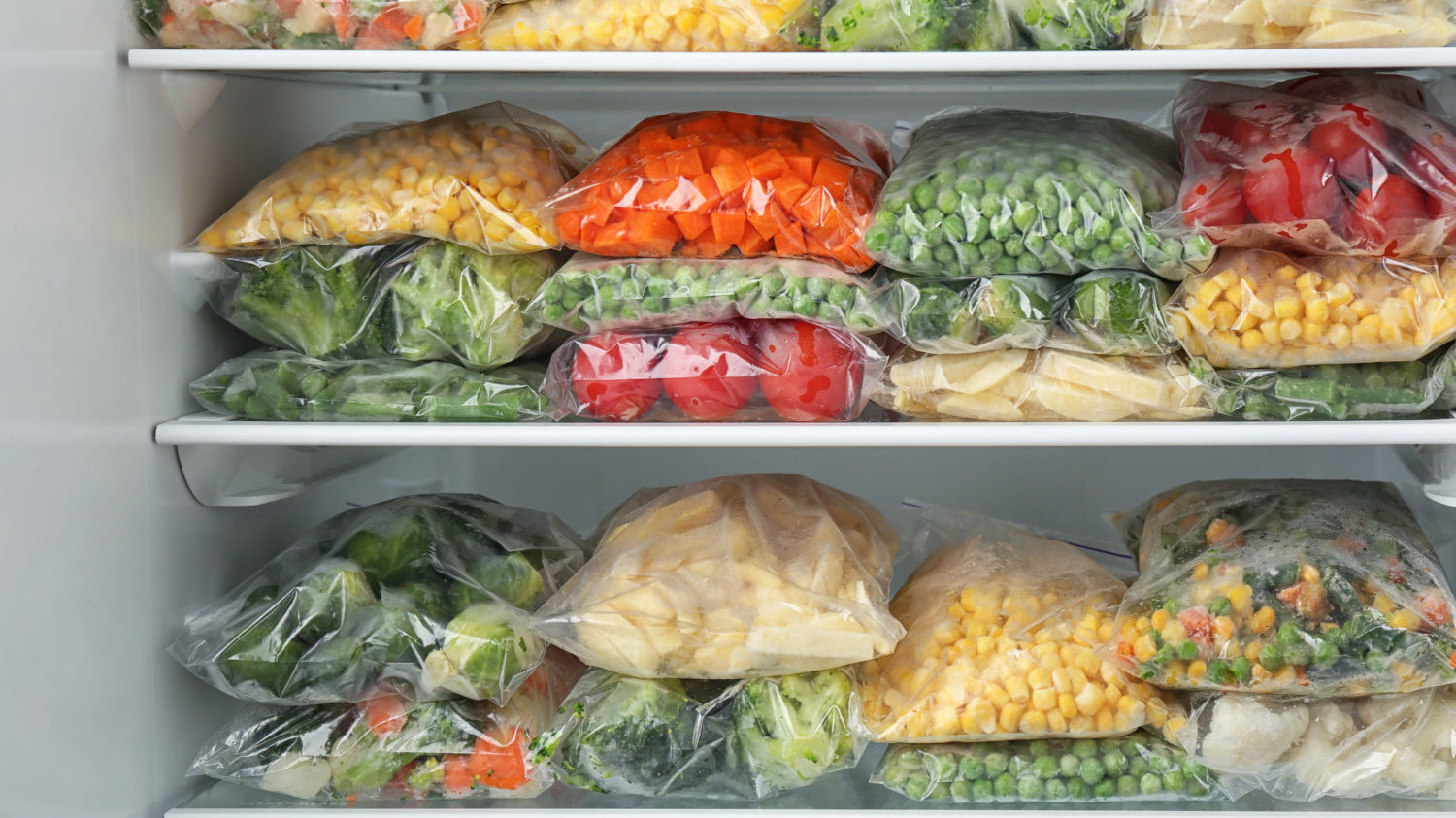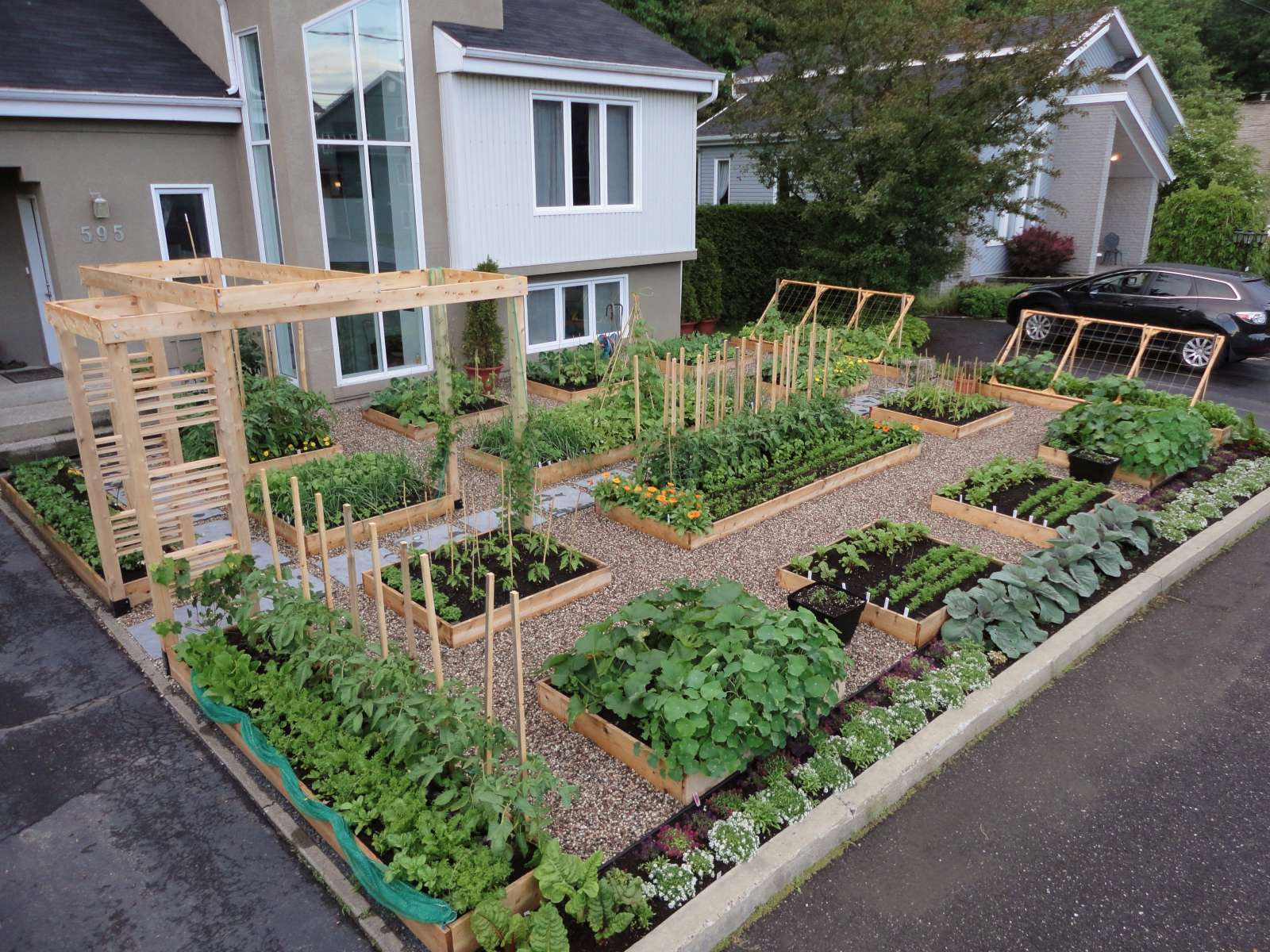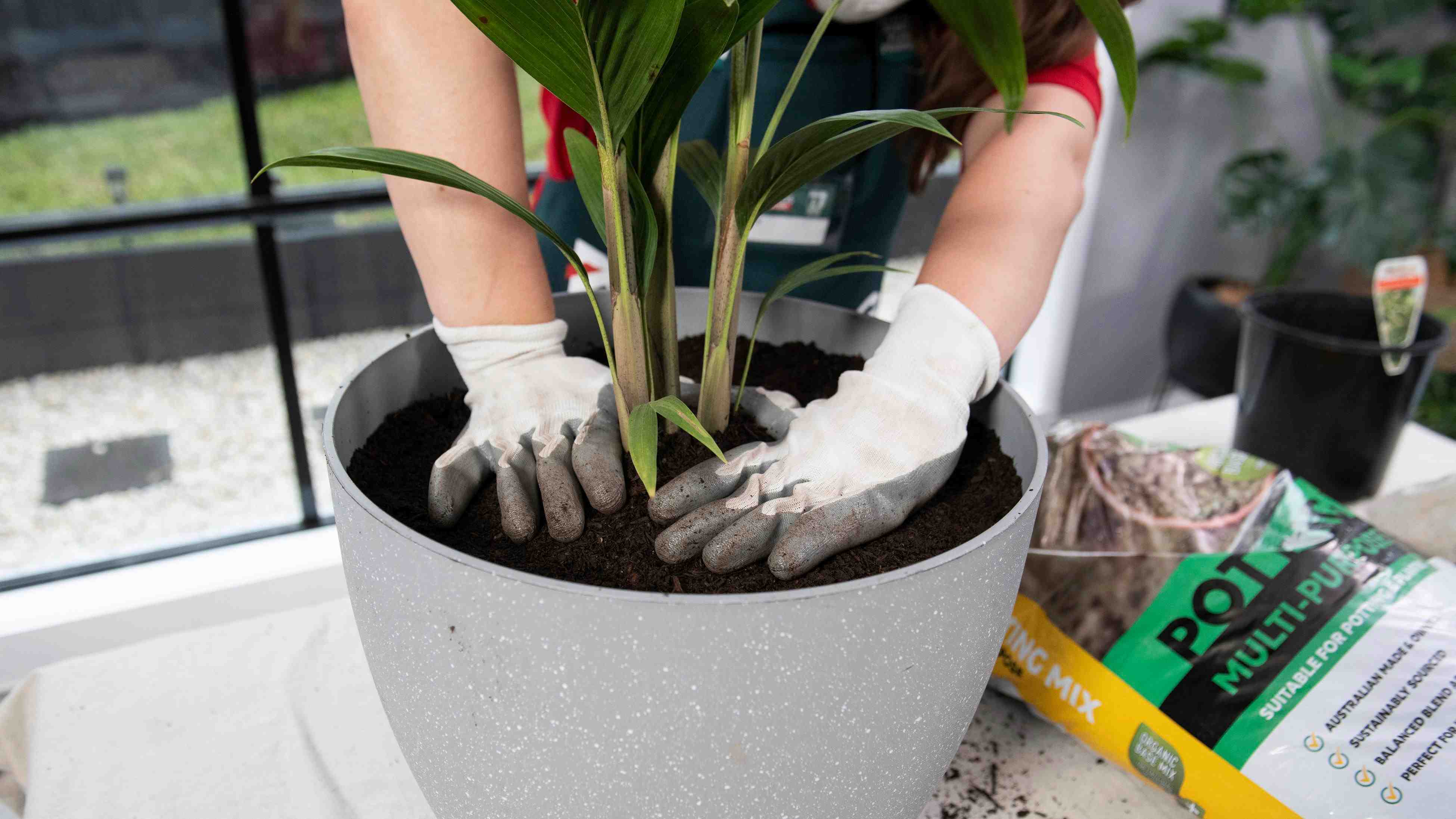Home>Gardening News and Trends>Latest News>How To Prepare Frozen Vegetables
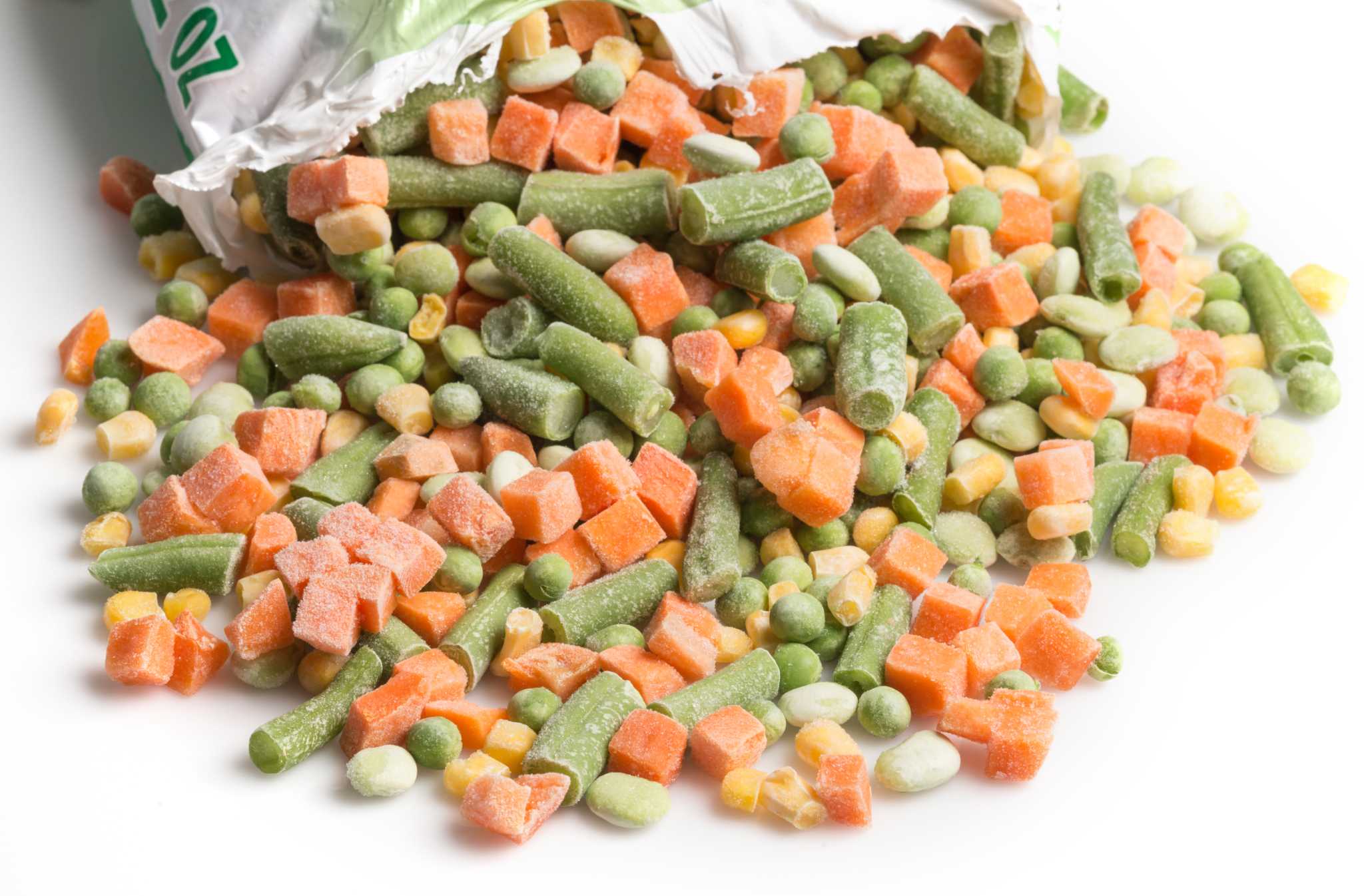

Latest News
How To Prepare Frozen Vegetables
Modified: January 22, 2024
Discover the latest news on how to prepare frozen vegetables with our expert tips and hacks. Learn the best methods for cooking frozen veggies to retain their nutrients and flavors.
(Many of the links in this article redirect to a specific reviewed product. Your purchase of these products through affiliate links helps to generate commission for Chicagolandgardening.com, at no extra cost. Learn more)
Table of Contents
Introduction
Welcome to the world of frozen vegetables – a convenient and versatile option for adding nutrition and flavor to your meals. Whether you’re a busy professional, a health-conscious individual, or simply looking to expand your culinary repertoire, frozen vegetables are a fantastic addition to your pantry. Gone are the days when frozen vegetables were perceived as inferior to fresh produce. With advancements in modern freezing techniques, frozen vegetables now retain their nutritional value and taste, making them a go-to option for many households.
Not only do frozen vegetables offer unmatched convenience, but they also provide a wide range of benefits. From the ease of preparation to their extended shelf life, there are numerous reasons why incorporating frozen vegetables into your diet is a smart choice. In this article, we will explore the benefits of using frozen vegetables, discuss how to choose and buy them, guide you on proper storage and defrosting techniques, offer various cooking methods, and shed light on their nutritional value.
So, whether you’re a novice in the kitchen or an experienced chef, let’s dive into the world of frozen vegetables and uncover the secrets to incorporating them into your cooking routine. Get ready to discover the countless possibilities and culinary adventures that await with frozen vegetables.
Benefits of Using Frozen Vegetables
When it comes to convenience, frozen vegetables are unmatched. They offer a host of benefits that make them an excellent choice for individuals with busy lifestyles. Let’s explore some of the key advantages:
- Year-Round Availability: Unlike fresh produce that is often limited to specific seasons, frozen vegetables are available year-round. This means you can enjoy your favorite vegetables regardless of the time of year. Whether it’s winter or summer, you can easily find a wide variety of frozen vegetables in your local grocery store.
- Extended Shelf Life: One of the biggest challenges with fresh vegetables is their short shelf life. They can quickly spoil if not used promptly. Frozen vegetables, on the other hand, have a much longer shelf life because they are preserved through freezing. This allows you to stock up on your favorite vegetables without worrying about them going bad.
- Retained Nutritional Value: Contrary to popular belief, frozen vegetables retain the majority of their nutritional value. The freezing process helps to preserve important nutrients, such as vitamins and minerals, ensuring that you still get the same health benefits as you would with fresh vegetables. In fact, frozen vegetables are sometimes even more nutritious if they are frozen at their peak ripeness.
- Convenience and Time-Saving: Preparing frozen vegetables is incredibly convenient and time-saving. Unlike fresh vegetables that require washing, peeling, and chopping, frozen vegetables are already cleaned, prepped, and ready to use. This means you can simply take them out of the freezer and use them directly in your recipes, saving you precious time in the kitchen.
- Versatility in Cooking: Frozen vegetables can be used in a wide range of dishes. Whether you’re making soups, stir-fries, casseroles, or salads, frozen vegetables provide endless possibilities. They can be easily incorporated into any recipe and offer the same texture and taste as their fresh counterparts.
These are just a few of the many benefits of using frozen vegetables. From convenience to nutrition, they can be a valuable addition to your kitchen arsenal. So, the next time you find yourself short on time or unable to access fresh produce, don’t hesitate to reach for a bag of frozen vegetables.
Choosing and Buying Frozen Vegetables
When it comes to choosing and buying frozen vegetables, there are a few key factors to consider to ensure you’re getting the best quality and flavor. Here are some tips to help you make the right choices:
- Check the Packaging: When browsing through the frozen vegetable section, pay attention to the packaging. Look for sturdy and intact packages without any signs of damage or ice crystals. Ice crystals can indicate that the vegetables have been thawed and refrozen, which may affect their quality.
- Read the Labels: Take the time to read the labels and check for any added ingredients or preservatives. Opt for brands that use minimal or no additives, and choose vegetables that are flash-frozen or individually quick frozen (IQF). This freezing process helps to lock in flavor and nutrients.
- Go for Organic: If possible, choose organic frozen vegetables. Organic vegetables are grown without synthetic pesticides and fertilizers, making them a healthier option. Organic frozen vegetables also tend to have a more natural and vibrant flavor.
- Look for Variety: Explore the wide range of frozen vegetables available. From classic options like peas, carrots, and corn to more exotic choices like edamame or butternut squash, there are plenty of options to suit your taste preferences and culinary creativity. Experiment with different varieties to add excitement and diversity to your meals.
- Consider Frozen Vegetable Blends: Frozen vegetable blends offer a convenient way to incorporate a mix of flavors and textures into your dishes. Look for blends specifically designed for stir-fries, soups, or roasted vegetables. These pre-packaged mixes save you time and effort in the kitchen.
- Buy in Bulk: If you have sufficient freezer space, consider buying frozen vegetables in bulk. This not only allows you to stock up and save money but also ensures you have a steady supply of vegetables whenever you need them. Just be sure to reseal the packages properly to maintain the quality.
By following these tips, you can choose and buy high-quality frozen vegetables that will serve as a versatile and convenient staple in your kitchen. Remember to keep the freezer temperature at or below 0°F (-18°C) to maintain the quality and taste of your frozen vegetables for an extended period.
Proper Storage of Frozen Vegetables
Proper storage is crucial for maintaining the quality and taste of frozen vegetables. Here are some tips to ensure your frozen vegetables stay fresh and delicious:
- Keep the Freezer at Optimal Temperature: Set your freezer temperature to 0°F (-18°C) or below. This temperature helps to maintain the quality of the frozen vegetables over time.
- Keep Frozen Vegetables in Their Original Packaging: It is best to keep frozen vegetables in their original packaging, as it is specifically designed to preserve the vegetables’ quality. Look for packages with zip-lock seals or resealable bags to maintain freshness.
- Label and Date Packages: To keep track of the shelf life of your frozen vegetables, label each package with the date of purchase or freezing. This will help you identify how long the vegetables have been stored and when it’s time to use them.
- Organize and Rotate: Maintain an organized freezer by placing the oldest packages of frozen vegetables in front. This practice ensures that you use the oldest vegetables first, preventing them from being forgotten and going to waste.
- Prevent Freezer Burn: Freezer burn can occur when frozen vegetables are exposed to air. To prevent this, make sure your packages are properly sealed and free from any air pockets. Consider double-wrapping vegetables for added protection.
- Don’t Let Vegetables Thaw and Refreeze: Avoid thawing and refreezing frozen vegetables as it can compromise their quality. Once you thaw the vegetables, it’s best to use them immediately or discard any leftovers to prevent the growth of bacteria.
- Consider Transferring to Airtight Containers: If you prefer, you can transfer your frozen vegetables to airtight containers after opening the original packaging. This can help minimize the potential for freezer burn and keep the vegetables fresher for longer.
- Prevent Cross-Contamination: To avoid cross-contamination, keep your frozen vegetables separate from raw meats, seafood, or poultry. This will prevent any potential transfer of bacteria and maintain food safety standards.
By following these storage tips, you can ensure that your frozen vegetables stay in optimal condition, ready to be used whenever you need them. Remember to check the quality of the packaging and keep track of the expiration dates to maximize the flavor and nutritional value of your frozen vegetables.
Defrosting Frozen Vegetables
When it comes to defrosting frozen vegetables, there are a few methods you can use to bring them back to their original state. Here are some techniques to consider:
- Refrigerator Thawing: The safest and most recommended way to thaw frozen vegetables is to transfer them from the freezer to the refrigerator. Place the sealed package or container in the refrigerator and allow the vegetables to thaw slowly overnight or for a few hours. This method helps to retain the quality and texture of the vegetables.
- Cold Water Bath: If you need to thaw your frozen vegetables quickly, you can opt for the cold water bath method. Place the frozen vegetables in a sealed plastic bag and submerge it in a bowl of cold water. Change the water every 30 minutes to ensure it stays cold. This method usually takes about 30-60 minutes, depending on the size and thickness of the vegetables.
- Microwave Thawing: If you’re in a hurry, you can use the defrost setting on your microwave to thaw small portions of frozen vegetables. Place the vegetables in a microwave-safe dish and follow the manufacturer’s instructions for defrosting. Be sure to check and stir the vegetables regularly to prevent uneven thawing or cooking.
Regardless of the method you choose, it’s important to note that once the frozen vegetables are thawed, they should be used promptly. Avoid refreezing thawed vegetables, as it can affect their texture and taste.
It’s worth mentioning that some vegetables can be cooked directly from frozen, especially if you are planning to use them in a recipe that involves simmering, sautéing, or stir-frying. In such cases, you can add the frozen vegetables to the dish without thawing, following the cooking instructions provided.
Remember, proper defrosting ensures that your frozen vegetables maintain their taste, texture, and nutritional value. By using the appropriate thawing method, you can enjoy the convenience of frozen vegetables while still achieving delicious and satisfying results in your cooking.
Cooking Methods for Frozen Vegetables
When it comes to cooking frozen vegetables, there are several methods you can utilize to achieve delicious results. Here are some popular cooking techniques to consider:
- Boiling: Boiling is a simple and quick method for cooking frozen vegetables. Bring a pot of water to a boil, then add the frozen vegetables and cook until they are tender and heated through. Be mindful not to overcook them to avoid losing their texture and nutrients. Remember to season the water with salt or vegetable broth for added flavor.
- Steaming: Steaming is a gentle method that helps retain the nutrients and vibrant colors of frozen vegetables. Place the vegetables in a steamer basket or colander over boiling water, cover with a lid, and steam until they are tender. This method preserves the texture and natural flavors of the vegetables without any additional oil or fat.
- Sautéing: Sautéing frozen vegetables is a fantastic way to add some caramelization and enhanced flavors. Heat a skillet or sauté pan with a bit of oil or butter over medium-high heat, then add the frozen vegetables and sauté until they are cooked through and slightly browned. This method works well with stir-fry mixes or individual vegetables like peppers, onions, or zucchini.
- Roasting: Roasting frozen vegetables is a great way to bring out their natural sweetness and create a crispy texture. Preheat the oven to a high temperature (around 425°F/220°C), spread the frozen vegetables on a baking sheet, drizzle with oil, season with spices or herbs, and roast until they are tender and lightly browned. This method is perfect for root vegetables, broccoli, cauliflower, and Brussels sprouts.
- Microwaving: Microwaving frozen vegetables is a quick and convenient option for those on the go. Place the frozen vegetables in a microwave-safe dish, add a small amount of water, cover the dish, and microwave according to the manufacturer’s instructions or until the vegetables are tender. Stir them occasionally during microwaving to ensure even cooking.
- Add to Soups and Stews: Another easy way to incorporate frozen vegetables is by adding them directly to soups, stews, or casseroles. They can be added straight from the freezer, allowing them to cook and thaw as the dish simmers. Frozen vegetables are particularly handy when you need to quickly bulk up a soup or add extra nutrition to a stew.
Feel free to experiment with various cooking methods and combinations to discover your favorite way to prepare frozen vegetables. Each method offers different textures and flavors, providing endless possibilities for creating nutritious and delicious meals.
Seasoning and Flavoring Frozen Vegetables
Frozen vegetables provide a blank canvas for adding a wide range of flavors and seasonings to elevate their taste. Here are some ideas to season and flavor your frozen vegetables:
- Herbs and Spices: Experiment with different herbs and spices to enhance the flavor of your frozen vegetables. Common options include garlic, onion powder, oregano, thyme, rosemary, cumin, paprika, and chili powder. Sprinkle them over the vegetables while cooking or toss them with some olive oil before roasting.
- Sauces and Dressings: Jazz up your frozen vegetables with sauces and dressings. Drizzle some balsamic glaze or vinaigrette over steamed or roasted vegetables for a tangy kick. You can also toss them with teriyaki sauce, soy sauce, or a creamy dressing for added richness and depth of flavor.
- Citrus Zest and Juice: Add brightness to your frozen vegetables by grating some citrus zest, such as lemon or orange, over them. Squeeze a bit of fresh citrus juice on top to impart a refreshing and zesty taste. The acidity and aroma of citrus can complement a wide variety of vegetables.
- Cheese: Sprinkle grated or crumbled cheese on your cooked frozen vegetables for a creamy and indulgent flavor. Options like Parmesan, cheddar, feta, or goat cheese work well with a variety of vegetables. Grated Parmesan adds a savory touch, while feta provides a salty and tangy note.
- Nuts and Seeds: Toasted nuts and seeds add both crunch and flavor to frozen vegetables. Toast some pine nuts, almonds, sesame seeds, or sunflower seeds and toss them with the cooked vegetables. Not only do they enhance the texture, but they also provide an additional layer of richness and nuttiness.
- Soy Sauce and Sesame Oil: Create an Asian-inspired twist by drizzling soy sauce and a few drops of sesame oil over your sautéed or stir-fried frozen vegetables. This combination adds a savory umami flavor and a hint of nuttiness that pairs well with various vegetable stir-fries.
- Fresh Herbs and Greens: Consider adding fresh herbs and greens to your cooked frozen vegetables just before serving. Chopped parsley, cilantro, basil, or mint can bring freshness and vibrant color to your dish. You can also toss in some baby spinach or arugula for added texture and nutritional value.
- Custom Seasoning Blends: Create your own seasoning blends by combining your favorite herbs, spices, and seasonings. Mix them in a jar and use this personalized seasoning blend to add flavor to your frozen vegetables. It allows you to control the flavor profile and adjust it to your preferences.
Remember to taste and adjust the seasoning as you go, ensuring the flavors are well-balanced and complement the natural flavors of the frozen vegetables. With a bit of creativity and experimentation, you can transform your frozen vegetables into a burst of flavors that will delight your taste buds.
Nutritional Value of Frozen Vegetables
Frozen vegetables offer more than just convenience and versatility – they are also packed with essential nutrients that are important for our overall health. Here are some key reasons why frozen vegetables are a nutritious addition to your diet:
- Retained Nutrients: Frozen vegetables are typically picked and frozen at their peak ripeness, which helps to preserve their nutritional value. Freezing techniques lock in vitamins, minerals, and antioxidants, ensuring that these important nutrients are retained even after the freezing process.
- Rich in Vitamins and Minerals: Frozen vegetables are a great source of vitamins and minerals that are vital for our body’s functions. They are particularly rich in vitamins A, C, and K, as well as minerals like potassium, magnesium, and folate. These nutrients contribute to a strong immune system, healthy vision, bone health, and overall well-being.
- Dietary Fiber: Frozen vegetables are an excellent source of dietary fiber, which is important for digestion and maintaining a healthy digestive system. Fiber not only helps to promote regular bowel movements but also supports healthy cholesterol levels and blood sugar control.
- Low in Calories: Most frozen vegetables are naturally low in calories, making them a great choice for those looking to manage their weight. They offer a high nutrient-to-calorie ratio, providing essential vitamins and minerals without adding excessive calories to your diet.
- Antioxidants: Many frozen vegetables are rich in antioxidants, which help to protect our cells from damage caused by harmful free radicals. Antioxidants have been associated with a reduced risk of chronic diseases, including heart disease, certain cancers, and age-related macular degeneration.
- Phytonutrients: Frozen vegetables contain various phytonutrients, which are natural compounds that offer numerous health benefits. For example, broccoli and other cruciferous vegetables contain sulforaphane, which has been linked to potential anti-cancer properties.
- Contribution to a Balanced Diet: Including a variety of frozen vegetables in your diet can contribute to a balanced and nutrient-rich eating pattern. They can be enjoyed as standalone side dishes, added to soups and stews, or incorporated into main courses, providing a wide range of nutrients to support overall health and well-being.
While fresh vegetables are often celebrated for their nutritional content, frozen vegetables are a convenient and equally nutritious option. They offer a long shelf life and can be just as nutrient-dense as their fresh counterparts. So, don’t hesitate to stock up on frozen vegetables to ensure you always have a reliable source of essential nutrients at your fingertips.
Conclusion
Frozen vegetables have come a long way and are now a fantastic option for those seeking convenience, nutrition, and flavor in their meals. Gone are the days when frozen vegetables were considered inferior to fresh produce. With modern freezing techniques, they retain their nutritional value and offer a wide range of benefits.
From their year-round availability and extended shelf life to their retained nutrients and versatility in cooking, frozen vegetables provide unmatched convenience and flexibility. They offer a solution for busy individuals, health-conscious eaters, and anyone looking to expand their culinary horizons.
When choosing frozen vegetables, it’s important to check the packaging, read the labels, and opt for organic varieties if possible. Proper storage and defrosting techniques ensure their quality and taste are maintained. Whether you choose to boil, steam, sauté, roast, or microwave, there are plenty of cooking methods to bring out the best flavors in frozen vegetables.
Adding seasonings and flavors can transform frozen vegetables into delicious and nutritious dishes. Experiment with herbs, spices, sauces, citrus zest, cheeses, nuts, and seeds to create exciting culinary combinations. With their retained nutrients, low calories, and contribution to a balanced diet, frozen vegetables offer a host of health benefits.
So, next time you find yourself needing a quick and nutritious meal, don’t overlook the versatility and convenience of frozen vegetables. Incorporate them into your cooking routine and explore the endless possibilities they offer. With their availability, affordability, and nutritional value, frozen vegetables are a true kitchen staple for any home cook.
